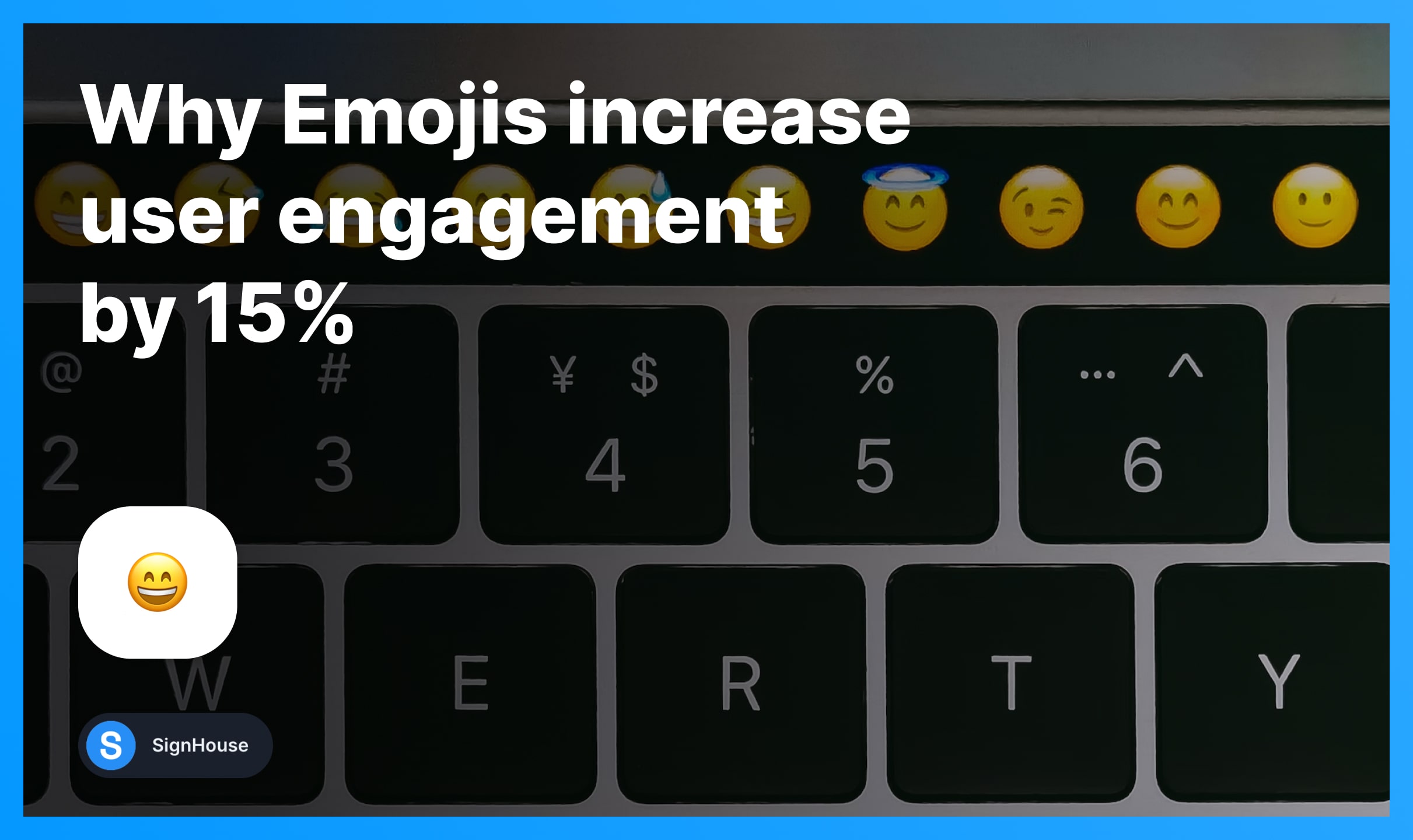Why Emojis Increase User Engagement by 15%

Emojis are everywhere from social networks to smartphones to emails and beyond. There are more than 2 billion smartphone users all over the world who send 41.5 billion messages and 6 billion emoticons every single day.
People love using them.
And that’s why 4 out of 10 millennials don’t prefer reading instead, they love to engage with pictures.
It is no surprise that marketers have started using them to communicate and engage with their audience.
Bud Light, for instance, tweeted an emoji American flag on the 4th of the July. Check the number of retweets and favorites. You won’t get such engagement with the text.
-min.jpg)
According to Quintly, use of emojis increase engagement by a whopping 48% on Instagram. Posts that use emojis on Instagram have interaction rate of 2.21% while posts without emojis have 1.77%.
Larry Kim, the founder the WordStream, conducted an experiment to analyze the impact of emojis on user engagement. He ran two different ads on Twitter, one with emojis and one without. The tweet with emojis received 25.4% more engagement than the other tweet. Additionally, the cost per engagement was significantly lower for the emoji tweet.
So yes, emoji user engagement is a real thing.
The big question is: How?
What’s so special about emojis that people love engaging with them?
Below are some science-based reasons why emojis increase user engagement and how you should use them in your content and other marketing strategies to better connect with your audience.
5 Reasons why Emojis Increase User Engagement
1. Emojis are equivalent to the human face
Yes, this might be surprising but it has been scientifically proven. According to Churches, the author of Emoticons in mind: An event-related potential study:
“Most of us pay more attention to faces than we do to anything else. We know experimentally that people respond differently to faces than they do to other object categories.”
When people look at an emoji, their brain behaves in the same way as when they look at a real human face. Emoticons are considered equivalent to the human face by your brain.
This is why emoji user engagement is more than what you’ll see with text or any other content type.
This explains why tweets with emojis have higher engagement than their counterparts because people feel different about emojis than text.
2. Emojis correlate with happiness
A study revealed that when a person uses an emoticon he experiences enjoyment, happiness, personal interaction, usefulness, and perceived information richness. They’re enjoyable as well as helpful in communication.
Using emojis in marketing will make you and the user happy. Those who will interact with your message will feel happier and that’s one great way to convey your marketing message.
3. Easy and instant processing
The human brain has this amazing capacity to process visuals 60K times faster than text. Emoticons are images which makes them easy-to-process and thus, human brain processes them quickly.

In other words, an emoji is worth 60K words. Now that’s something really amazing.
Neuroscientists from MIT found that human brain can process an entire image in as low as 13 milliseconds. The visual information from the retina is moved to the brain where it is interpreted such as the shape, color, and size. According to the authors:
“An image can be extracted even when an image is mixed up in a sequence of six or even 12 images presented at 13 milliseconds per image — a rate of about 75 frames a second.”
This is the reason why emojis in a Facebook post lead to 57% more likes, 33% more comments, and 33% more shares.
Now think of using emojis in ads. A user just needs to see your image for 13 milliseconds and your message will be delivered. Isn’t it great?
4. Social power
A study analyzed 31 million tweets and half million Facebook posts found that emoticons were a common factor among all the influential social accounts.
According to the study:
“Emoticon use is a powerful predictor of social status on both Twitter and Facebook despite being a rather simplistic way of conveying emotion. Individuals who use emoticons often (and positive emoticons in particular) tend to be popular or influential on Twitter.”
If you want to be popular or influential on social media, use emojis. This study explains emoji user engagement to some extent. If all the influencers are using emojis on leading social networks, this is a clear sign why people at large love interacting with them because they’re used to them.
The study, however, didn’t reveal why and how emojis increase social power and how it relates to human brain but you know how to gain social power.
5. Friendlier than text
Emoticons are perceived more friendly and competent, according to this study. The participants in the study had to chat with health and film experts. Participants rated experts who used emojis friendlier and competent.
This is because emojis affect cognition.
Similarly, emoticons change the way how people feel about the message. Another study revealed that when negative feedback from a supervisor is coupled with positive emoticons, it is welcomed and employees feel good about it and are more likely to accept the feedback happily.
And when disliking emoticons were used, they had the opposite effect.
People feel good about emoticons and they refer to the emoticon used to decode the message. This is another powerful reason why emojis increase user engagement.
How to use emojis to increase user engagement
There are several ways to use emoticons to increase user engagement and to better connect with your audience.
1. Content
Use of emoticons on social networks is old school, bring them to your blog. You should use emojis to get feedback from readers.

Since emojis are user-friendly and boost user engagement, you’ll be able to collect better and valuable feedback from visitors about your content.
Compare emojis with traditional share buttons. Share buttons don’t let users express their anger or sad feeling, emojis do. This type of detailed feedback will help you understand your audience and you’ll be able to see what works and what doesn’t.
2. Email
MyClever agency conducted a study to understand the impact of using emojis in email subject on email open rate. The results revealed that 56% of businesses saw an increase in email open rate when they used an emoji in the subject.
Emojis in subject line didn’t just improve open rate but they improved unique opens by 3.29%, unique clicks by 6.28%, and click-through rate by 18.93%.
A similar study was conducted by Econsultancy which revealed that using a snowman emoji in the email subject during the holiday season increased open rate by 66%.
You have to test and try different emoticons to see what works best for your subscribers. One thing is sure: Using emojis in email subject increase open rate.
Start using them now.
3. Push notifications
According to Leanplum, push notifications with emoticons get 85% more opens as compared to push notifications without emoticons.
Emoji push notifications are opened 135% more on Android and 50% more on iOS than notifications without an emoji.
If you have an app and want to re-engage with app users, don’t forget to use an emoji in the next push notification. It is sure to work.
Final words
Emojis are a real thing and they have the potential to increase user engagement like crazy. You can use them in any way you like in your marketing strategy. Think beyond social networks and take a leap. Use them in every marketing campaign and see how they perform.
Let emojis surprise you.








